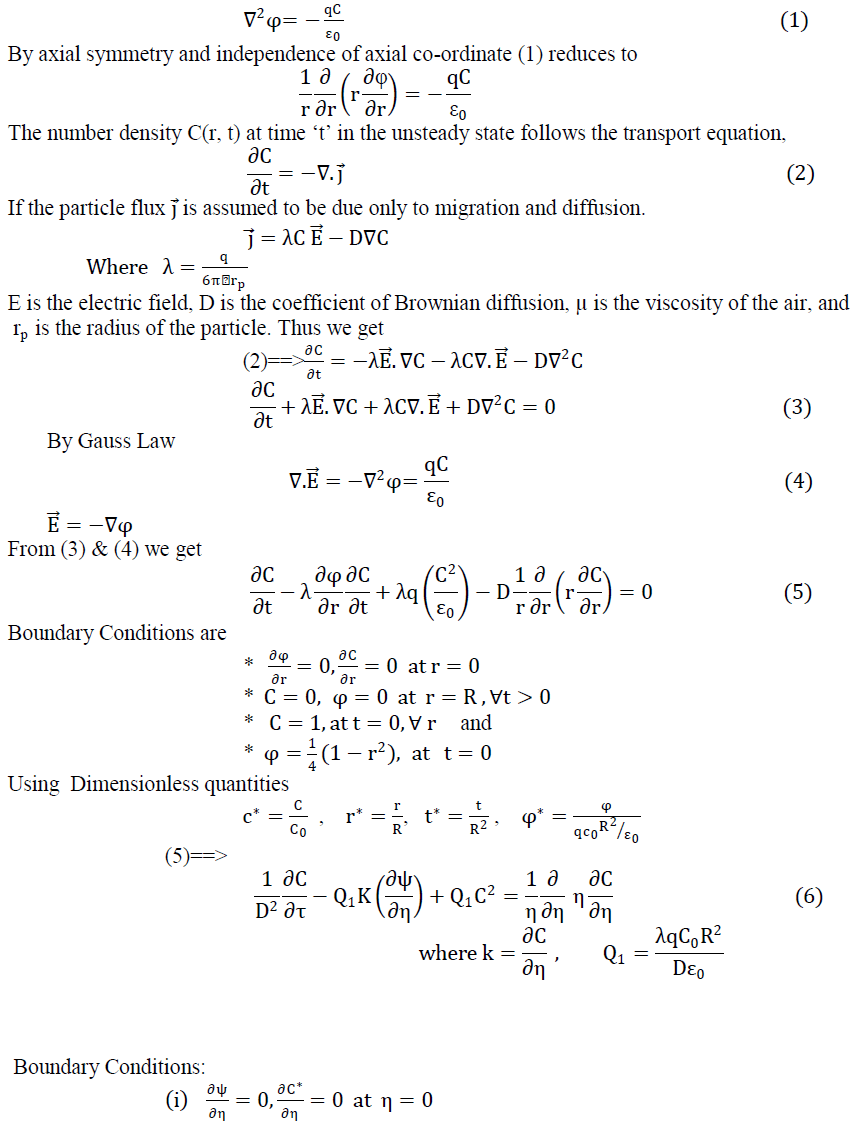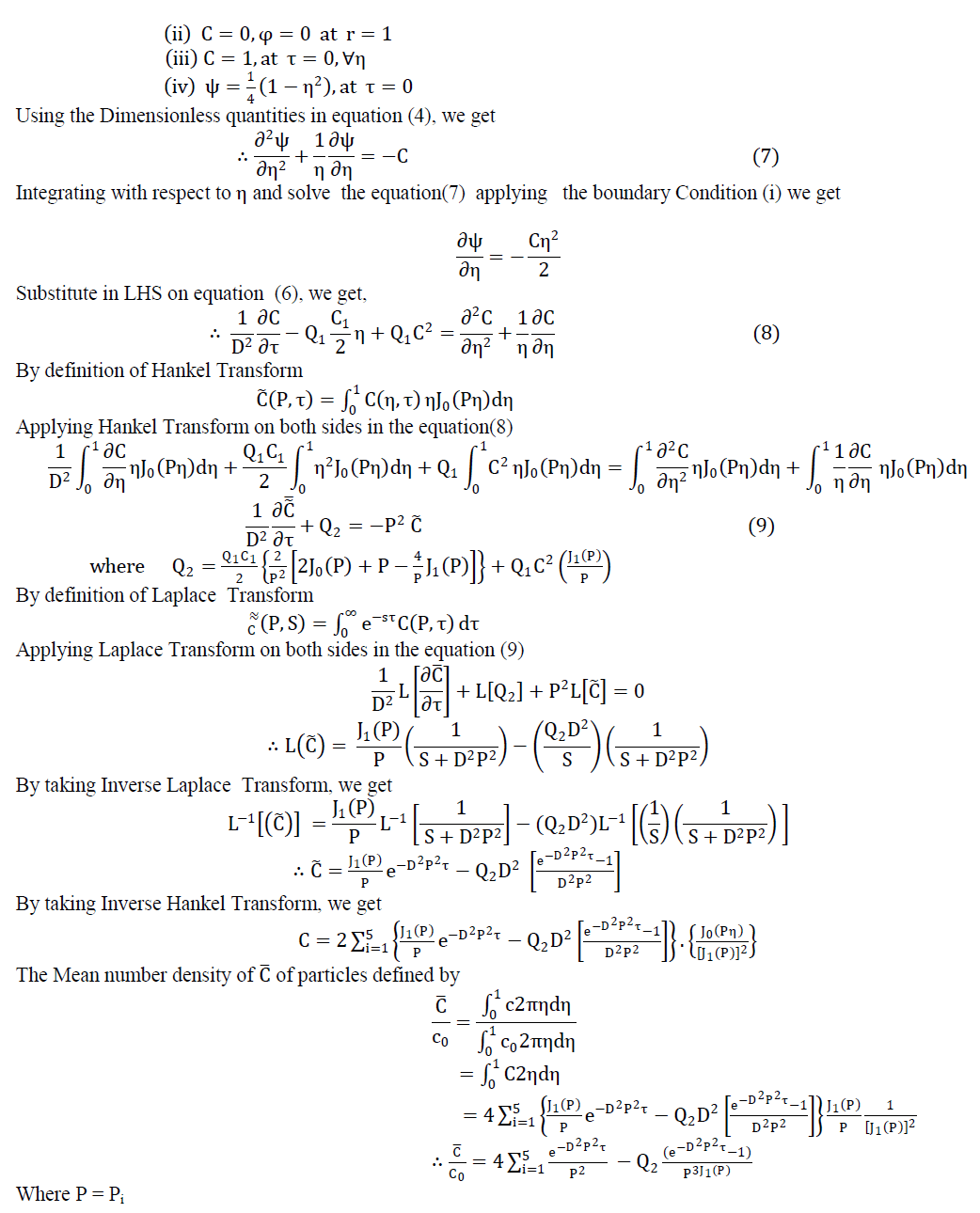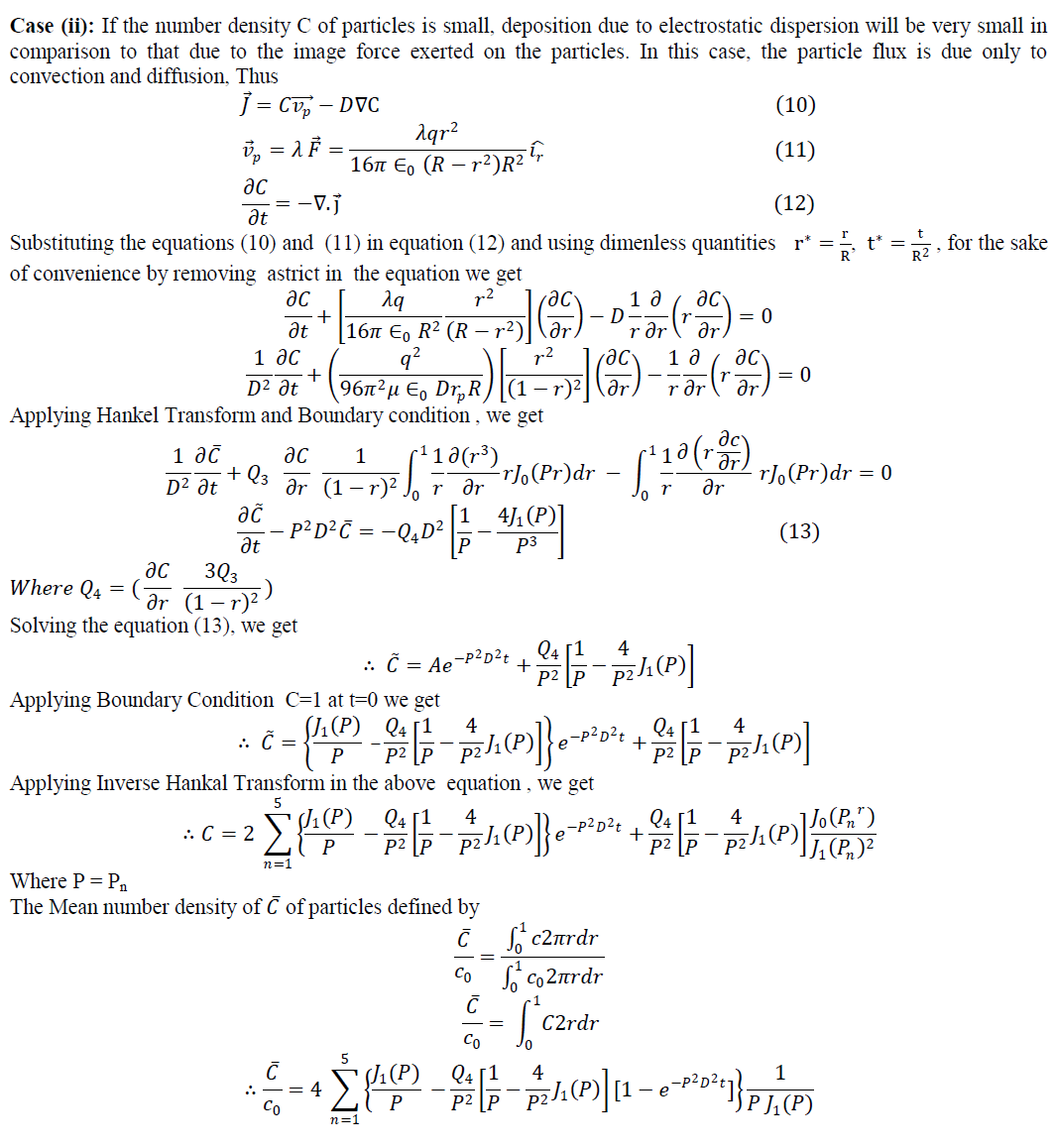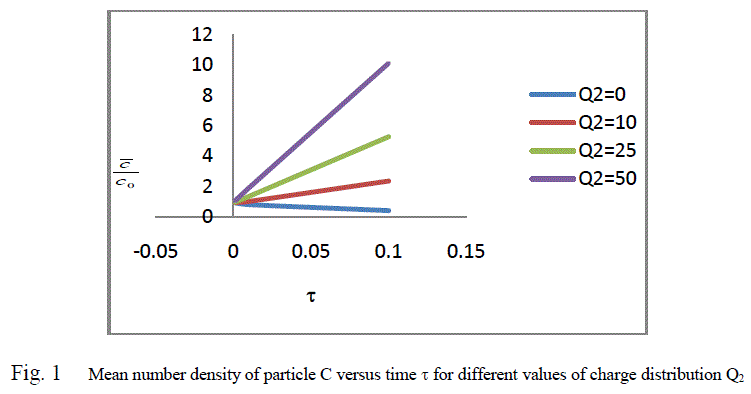ISSN ONLINE(2319-8753)PRINT(2347-6710)
ISSN ONLINE(2319-8753)PRINT(2347-6710)
M. Chitra1, S. Radhakrishnan2
|
| Related article at Pubmed, Scholar Google |
Visit for more related articles at International Journal of Innovative Research in Science, Engineering and Technology
The electrostatic charge carried by aerosol particles greatly enhances their deposition in the airways. Electrifications normally occur in aerosol generating process. It has been long suspected that the unipolar charge carried by the particles may have a significant in the deposition efficiency of the particles in the human respiratory tract during breathing. Deposition of charged particles in a trachea by their own space charge is investigated analytically, when the number density of the charged particles is large enough so that the potential is a smooth function given by Poisson equation and when the number density of charged particles is small so that only the image force is important. These two approaches have been applied in the mathematical model by using Weibel - symmetric model in the human respiratory tract. The mean number density of charged particles in the human air ways at different charge distribution is investigated analytically. The results indicates that the electrostatic dispersion can only lead to a small effect on the trachea deposition, the predominant effect is due to the image force exerted on the
Keywords |
| Bifurcation, submicron, aerosols ,Respiratory system. |
I. INTRODUCTION |
| When particles are inhaled they deposit with the respiratory system depositing on particle size shape and charge together with breathing condition such as inhalation flow rate, exhalation flow rate. Electrification normally occurs in aerosol generating process. It has been long suspected that the unipolar charged carried by the particle may have a significant effect on the deposition efficiency of particles in the human trachea during breathing. When the particle 1μm are considered the importance of electrical charge on particle deposition is demonstrated. Inhaled air and particles follow a flow path that travels from the trachea to the alveolac sacs, once deposited particles are retained in the lung for varying times depending on their chemical properties and their location within the lung. |
| Enhanced deposition of particles due to electrical charge, was first suggested by Wilson and Coll(1947),since then, the role of charge on the deposition of charged particle within the respiratory has been studied theoretically in physical lung models by Melandri et al(1975).Recent systematic measurements by Melandri et al(1975) however showed that this effect is quite significant for submicron & micron particles carrying unipolar charge of a magnitude of hundred electron. Since the results are insensitive to the particle density but depend strongly upon the particle charge, they further reasoned that the observed changes are caused primarily by the electrostatic precipitation resulting from the image force between the particle and the wall.Wilson(1947) was first to study the deposition of charged particle in circular tubes with reference to the relation of aerosols in the human lung. He considered the case when the deposition was due to electrostatic deposition and the deposition by other mechanisms was neglected. The result showed that the deposition is independent of the diameter of the tube, but depends only upon the total time that an aerosol has spent in each tube. where as targeted drug-aerosol delivery in the human respiratory system has been discussed by Kleinstreuer et al(2008). |
II. OBJECTIVE |
| In this paper we examine the problem analytically by considering only submicron charged particles where the Brownian diffusion is the only, other important mechanism responsible for the deposition in the human trachea. Deposition of charged particles in a trachea by their own space charge is investigated analytically, when the number density C of the charged particles is large enough, so that the potential ïÿýïÿý is a smooth function given by Poisson equation and when the number density of charged particles is small, so that only the image force is important . These two approaches have been applied in the mathematical model by using Weibel - symmetric model in the human respiratory tract. The mean number density of charged particles in the human air ways at different charge distribution is investigated analytically. The results indicates that the electrostatic dispersion can only lead to a small effect on the trachea deposition, the predominant effect is due to the image force exerted on the particles. |
III. MECHANISMS OF PARTICLE DEPOSITION AND SUB MICRON CHARGED PARTICLE DISTRIBUTION |
| During inhalation, the incoming air must negotiate a series of direction changes as it flows from the nose or mouth down through the branching airway system of lung. Each time the air changes direction the momentum of particles needs to keep them on their pre-established trajectories, which can cause them to impact on airway surfaces. The net result is the deposition of some of particles near the air surfaces, this is termed inertial impaction. The maximum deposition by impaction occurs at the throat, the first airway bifurcation and to a lesser degree at other bifurcations. Submicron particles in air undergo a random Brownian motion caused by collision with gas molecules. |
| The expected degree of displacement of particles as a result of Brownian motion increases as particle size decreases and is independent of particle density. The charge on an aerosol particles may effect its behavior in three ways, |
| 1. It will be deflected by an electric field. |
| 2. Coagulation and interaction with other particles is altered. |
| 3. Particles are attracted to neural surfaces by image forces. |
| 4. Since negligible electric fields exists within airspaces of the respiratory system, which will act as a faraday cage. The first consideration does not apply. The second factor may be important for dense aerosols. When charged particles are close to the walls of the airways. In general, particles with high electric mobility can have an enhanced respiratory tract deposition even though no external field is applied across the chest. The electrostatic enhancement of particle deposition, when it does occur, takes place predominantly in the human trachea. In particle, most ambient aerosols have reached charge equilibrium and have relatively low charge levels. Thus the deposition due to charge is usually small compared to deposition by the mechanical mechanisms. Micro particles deposition in large airways (example naral, oral and upper tracheobronchial airways) during inhalation results mainly from impaction, secondary flow convection and turbulent dispersion. However, enhanced deposition can be observed mostly around the glottis and the sidewalls of the upper trachea due to inertial impaction arising from the laryngeal jet and secondary flows (Xi and Longest 2007,and Zhang et al2005). |
| Inspiratory flow rate, inhaled particle size, and geometric characteristics(including rings at trachea) may significantly affect deposition pattens(Lie et al 2007; Russo et al 2008, Zhang and Finlay 2005). |
IV. MATHEMATICAL FORMULATION |
| For a simple calculation of the trachea deposition, we may assume that the human trachea of the airways have the geometry of symmetrical long cylindrical tube. In addition, the airflow in the trachea is assumed to have a flat velocity profile. The later assumption implies that the deposition from air flowing through the tube with a given passage time is equal to the deposition from still air in the same time interval. |
| Consider a system of charged particles of uniform size suspended in air, with uniform particle density C0, suddenly brought in a long cylindrical tube of radius R with rigid walls. The space charge of the particles, each carries a charge “q”, creates nonzero potentials within the system. |
V. METHODS OF SOLUTION |
| Case(i) : If the number density, C of the particles is large, their space charge forms a continuum and the potential φ is a smooth function given by PoissonâÃâ¬ÃŸs equation. |
 |
 |
 |
VI. RESULTS AND DISCUSSION |
| The deposition of inhaled particles in the human respiratory tract is most important for the understanding of basic transport phenomena and dosimetry health effects studies, considering toxic or therapeutic particles. The particle considered has a diameter of 0.33μm with unit density. Each carrying a charge of 29 electrons. The particle concentration at mouth is 1*105particles/cm3 |
| In case(i), When the number density C of the charged particles are large Fig.1 shows that the mean number density of charged particles decreases as increase of the charged distribution Q2, with respect to the time variant with symmetric. In case(ii), When the number density C of charge particles is very small in comparison to that due to the image force exerted on the particles, Fig. 2 shows that the mean number density of the charged particles decreases as increase of the charge distribution Q4 with respect to the time variant with symmetric. The underlying assumptions for particle transport and deposition are that the aerosols are spherical, non inter acting and deposit upon contact with the airway surface. Micron particles deposit non uniformly with very high concentrations at upper respiratory tract. |
VII. CONCLUSIONS |
| Airborne dust most often enters the body by being inhaled. The most hazardous particles are those of respirable size. When inhaled they can reach the air sacs in the lungs .Dust inhales into the respiratory system may be deposited in the lung and cause local irritation and if they are soluble in body fluids they may dissolve in the lung and pass directly into the blood stream. By their means toxic materials in the dust can travel to other origins and cause possibly more serious effects, stuffiness, runny nose, phlegm, coughing and difficulty in breathing. When lead dust reaches the circulatory system, it acts on the liver, kidneys or central nervous system |
 |
References |
|